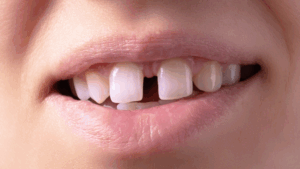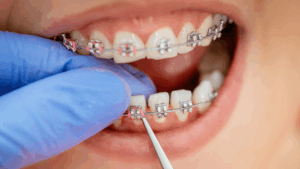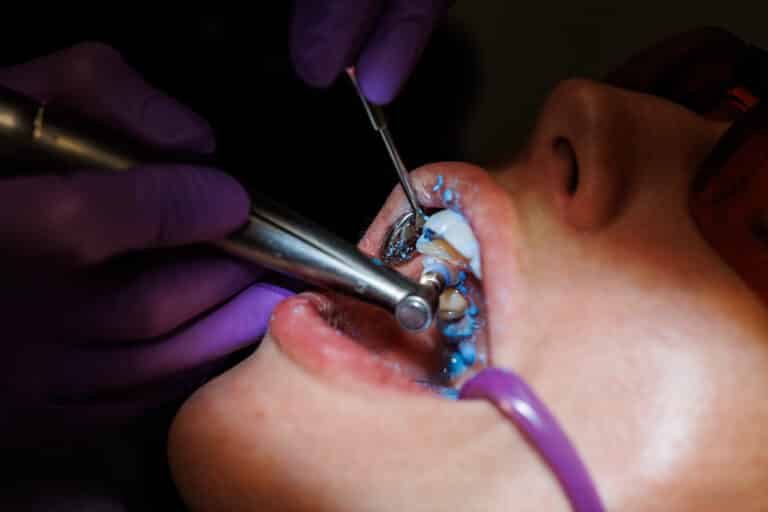Do you have a gap between your teeth and wonder if it’s normal, attractive, or something that should be fixed? You’re not alone. A gap between teeth, also known as diastema, is very common and can appear in both children and adults. For some, it’s a distinctive feature that adds charm and individuality to their smile — and in some cultures, a front tooth gap is even considered a sign of beauty or good fortune. For others, however, the gap may cause self-consciousness, speech difficulties, or discomfort when eating, leading them to explore treatments not only for cosmetic reasons, but also to improve confidence, oral function, and long-term dental health.
What Is a Gap Between Teeth (Diastema)?
A gap between teeth refers to the space that exists between two teeth. The most common example is the space between the upper front teeth, but gaps can occur anywhere in the mouth.

Some people have just one noticeable gap, while others may have several. From a dental perspective, the significance of a gap depends on its underlying cause, size, and whether it affects speech, chewing, or oral health.
Why Does a Gap Between Teeth Develop?
There are several reasons why gaps form between teeth. Some are harmless, while others may be a sign of deeper dental issues:
Gap between teeth from Genetics
- Genetics and natural development – Often, gaps are simply inherited. If your family members have them, you may too.
- Mismatch between jaw and teeth size – A larger jaw or smaller teeth create extra space, leading to gaps.
Gap between teeth from habits & dental health degradation
- Childhood habits – Prolonged thumb sucking, tongue thrusting, or pacifier use can push teeth apart.
- Gum disease – Periodontal disease damages the supporting structures of teeth, causing them to shift and creating wider gaps.
- Missing teeth – When a tooth is lost due to decay, trauma, or extraction, the surrounding teeth may drift into the space, leaving gaps elsewhere.
- Bite misalignment (malocclusion) – Overbites, underbites, and open bites can all affect tooth positioning and spacing.
Key takeaway: A gap between teeth is not always a problem, but if it results from gum disease, missing teeth, or jaw misalignment, it’s best to seek professional advice as it may worsen or cause other dental issues in the future.
Should You Fix a Gap Between Teeth?
Not every gap needs treatment. Some people keep their tooth gap as a signature feature. However, there are situations where fixing it may be worth considering:
- If it affects your confidence or smile aesthetics.
- If food regularly gets trapped, leading to irritation or decay.
- If it causes speech difficulties, such as lisps or whistling.
- If it results from gum disease or missing teeth, which may worsen over time.
- If you notice the gap is growing larger with age.
- If you simply prefer a more uniform smile.
In short: fixing a gap between teeth is a personal choice, but sometimes it’s also the healthier option.
🦷 How to Fix a Gap Between Teeth: Treatments That Work
A gap between teeth can be closed for cosmetic or functional reasons, depending on your goals. Modern dentistry offers several safe and effective solutions — from quick fixes to longer-term orthodontic options.
If you decide to close your gap, your dentist may recommend one or a combination of the following treatments:
1. Braces for Gaps Between Teeth
Braces use gradual pressure to move teeth into proper alignment. They’re highly effective for both small and large gaps and are particularly useful if you also have bite issues. Treatment typically takes 1–2 years but delivers long-lasting results.

2. Invisalign and Clear Aligners for Gaps Between Teeth
Invisalign is a discreet, removable option for closing mild to moderate gaps. The aligners are nearly invisible, comfortable to wear, and popular with adults and teens. For success, however, they must be worn consistently for 20–22 hours daily.
3. Dental Bonding for Gaps Between Teeth
Bonding uses tooth-coloured resin to fill small gaps. It’s one of the quickest and most affordable solutions, often completed in a single visit. While effective, bonding may chip, stain, or need replacement every few years.
4. Dental veneers for Gaps Between Teeth
Porcelain or composite veneers are thin, custom-made shells that cover the front of teeth, instantly improving their size, shape, and colour. Veneers can close gaps while giving your smile a complete makeover.
5. Dental Implants for Gaps Between Teeth
When gaps are caused by missing teeth, dental implants are often the best solution. Implants replace both the root and crown of the tooth, restoring function and preventing neighbouring teeth from shifting.
6. Dental Bridges for Gaps Between Teeth
Bridges fill spaces left by missing teeth using neighbouring teeth for support. They’re quicker and less invasive than implants but require reshaping of the adjacent teeth.
7. Cosmetic Contouring for Gaps Between Teeth
For very small gaps or uneven tooth edges, reshaping the enamel can make teeth look more uniform. This is often combined with bonding for subtle but effective results.
How Much Does It Cost to Fix a Gap Between Teeth in Singapore?
The cost of treatment depends on the method you choose:
Dental bonding – the most affordable option, priced per tooth.
Veneers – higher cost per tooth, but provide a more durable and aesthetic result.
Braces or Invisalign – can range into several thousand dollars depending on the complexity of alignment issues.
Dental implants – the most expensive upfront, but a permanent and long-lasting solution for missing teeth or larger gaps.
Every smile is unique, and the best treatment depends on your individual needs. That’s why we recommend coming in for a professional consultation — our dentists can assess your case and advise the most suitable options.
👉 View our pricing here and book your appointment today to take the first step towards closing your gap with confidence.
How to Prevent a Gap Between Teeth From Developing
While some causes, like genetics, can’t be controlled, many gaps can be avoided with proper care:
- Maintain excellent oral hygiene – Brush twice a day, floss daily, and use mouthwash.
- See your dentist regularly – Early detection of gum problems or bite issues prevents gaps from worsening.
- Correct habits early – Address thumb sucking or tongue thrusting in children.
- Protect your teeth – Wear a mouthguard for sports or activities with a risk of injury.
- Schedule orthodontic evaluations for kids – Early intervention can prevent major spacing issues later.
Does a Gap Between Teeth Get Worse With Age?
Not always — but in some cases, gaps can widen over time due to:
- Gum recession, which exposes more of the tooth.
- Tooth loss, causing surrounding teeth to shift.
- Untreated gum disease, leading to reduced bone and gum support.
- Wear and tear, which gradually alters tooth shape.
👉 Regular dental visits and healthy gums are the best defence against these age-related changes.
Common Misconception: Flossing Causes a Gap Between Teeth
Flossing does not create gaps between your teeth. On the contrary, flossing helps prevent gum disease, one of the leading causes of tooth spacing. Done properly, flossing strengthens gums, reduces plaque buildup, and helps keep teeth stable.

If you notice new gaps, the culprit is usually gum issues — not flossing.
Take the Next Step Towards Fixing a Gap Between Teeth
Whether you choose to embrace your gap between teeth or prefer to close it, the decision is deeply personal. What matters most is maintaining strong oral health and feeling confident in your smile. At WeSmile Dental, we offer a full range of solutions — from Invisalign and braces to veneers, bonding, implants, and bridges — all tailored to your unique needs.
Book your consultation today and let our team guide you to the best treatment for your smile.
💬 FAQs About Gaps Between Teeth
1. Is a gap between teeth harmful?
Not usually. Small gaps are harmless, but gaps caused by gum disease, tooth loss, or misalignment may need treatment.
2. Can a gap between teeth close naturally?
Sometimes in children, when permanent teeth erupt. In adults, gaps rarely close without treatment.
3. What’s the fastest way to fix a gap between teeth?
Bonding or veneers offer instant results. Braces and Invisalign take longer but are permanent.
4. Does a gap between teeth affect speech?
Yes, large gaps — especially between the front teeth — can cause lisps or whistling.


